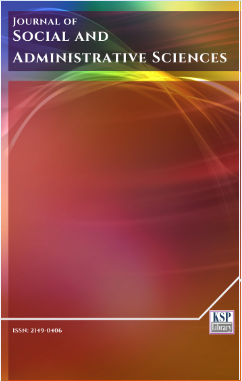The Effectiveness of Fiscal Rules - The Case of Switzerland
Abstract
Abstract. This paper aims to measure the effectiveness of fiscal rules. Fiscal rules are constraints on fiscal policy that limit budgetary outcomes. Some studies in the literature have examined their effectiveness using a stringency index. Arguing this index possesses some arbitrariness, this study measured the effectiveness of fiscal rules using cluster analysis. This cluster analysis resulted in dividing the data into two clusters. Using panel data of 26 Swiss cantons plus the Swiss federation over the period 1990 - 2012, a Least Squares Dummy Variable econometric model was conducted. The findings indicate that fiscal rules have a favorable effect. It was found that the frameworks of cantons in cluster 1 are more effective in decreasing cantonal deficits than those of cluster 2. Furthermore, it was found that cantons in cluster 1 have lower debt levels in comparison to cantons in cluster 2.
Keywords. Fiscal rules, Qualitative data analysis, Regional governments, Government spending.
JEL. C50, C80, H30, H50, H60, H70.References
Babuc, N. and Mueller, U. (2012). SPARPAKET II DES KANTONS ST.GALLEN DAUERHAFTE STABILISIERUNG DES STAATSHAUSHALTES, Technical report, BAKBASEL.
Bodmer, F. (2006). The Swiss Debt Brake: How it Works and What Can Go Wrong, Swiss Journal of Economics and Statistics (SJES) 142(III): 307–330.
Botschaft zur Schuldenbremse (2000). Technical Report 00.060, Bundesrat. Cameron, A. C. and Trivedi, P. K. (2009). Microeconometrics Using Stata, Stata Press.
Chatagny, F. (2013). Incentive Effects of Fiscal Rules on the Finance Ministers Behaviour: Evidence from Revenue Projections in Swiss Cantons, KOF Working papers 13-347, KOF Swiss Economic Institute, ETH Zurich.
Die Schuldenbremse des Bundes: Erfahrungen und Perspektiven (2013). Bundesrat.
Feld, L. P. and Kirchgaessner, G. (2006). On the Effectiveness of Debt Brakes: The Swiss Experience, CREMA Working Paper Series 2006-21, Center for Research in Economics, Management and the Arts (CREMA).
Green, W. H. (2008). Econometric Analysis, sixth edition edn, Pearson Prentice Hall.
Haerdle, W. and Simar, L. (2003). Applied Multivariate Statistical Analysis, sixth edition edn, Springer.
Kirchgaessner, G. (2013). Fiscal Institutions at the Cantonal Level in Switzerland, Discussion Paper 2013-04, University of St. Gallen.
Kraan, D.-J. and Ruffner, M. (2005). Budgeting in Switzerland, Technical Report 12/2006, OECD JOURNAL ON BUDGETING.
Krogstrup, S. and W¨alti, S. (2008). Do Fiscal Rules Cause Budgetary Outcomes?, Public Choice 136(1/2): 123–138.
Luechinger, S. and Schaltegger, C. (2013). Fiscal rules, budget deficits and budget projections, International Tax and Public Finance 20(5): 785–807.
Niepelt, D. and Schaltegger, C. (2013). The Swiss Debt Brake Ten Years On, Technical Report 2.
Norusis, M.. (2005). IBM SPSS Statistics 19 Statistical Procedures Companion. Public debt (2014). United States Central Intelligence Agency. URL: https://www.cia.gov/library/publications/the-worldfactbook/rankorder/2186rank.html
Ratschlag betreffend Einfuehrung einer Schuldenbremse (2003). Technical Report 9220, Regierungsrat, Kanton Basel-Stadt.
Yerly, L. (2006). Instruments lappui de la rigueur budgtaire: un modle cantonal idal?, Working paper de l’IDHEAP 12/2006, Institut de hautes etudes en administration publique.
DOI: http://dx.doi.org/10.1453/jsas.v3i3.1033
Refbacks
- There are currently no refbacks.
....................................................................................................................................................................................................................................................................................................................................... Journal of Social and Administrative Sciences - J. Adm. Soc. Sci. - JSAS - www.kspjournals.org
ISSN: 2149-0406
Editor: editor-jsas@kspjournals.org Secretarial: secretarial@kspjournals.org Istanbul - Turkey.
Copyright © KSP Library




